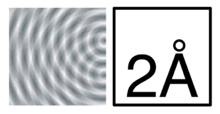500 Words, Day 24
I've had two major careers: writing and UX. I'm constantly amazed at how many important components, processes, and motives of these two disciplines dovetail. Yet I'm also amazed at how one is seen as a solitary pursuit – the writer in his clean well-lighted room or that room of her own – while UX is considered a team sport, with creativity as a byproduct of collaboration only. It's true, but it's not true. At least not the way most people think about it.
(This is not to discount Leah Buley's "UX Team of One" movement; I'm a big fan of her and her presentation. Though I have to admit I've not yet gotten to reading her book; it's focused on UX professionals within a corporate environment, which is not something I've ever done.)
Of course writers now and, well, always have invested in the Romantic notion of the lone writer, wrestling with language and worlds and ideas much, much greater than can be pinned to a page. I went through an MFA program. There, demonstrating how tortured you were was a competitive sport. And ultimately, yes, it's true that it's one person 99% of the time. And it's hard.
So, the process of creative writing. It looks like this:
No, wait, that's a bubble chamber at Brookhaven National Laboratory. But it's not far off: generate ideas, get them down, even if they lead to odd places or dead (for now) ends.
But the writing process doesn't end there. Writers also seek critique, share, force unsuspecting strangers into corners to make them listen to the nth revision of their latest pantoum. Joyce had Beckett read his manuscripts; Kafka and Max Brod read their drafts in bars to the laugher of friends. Journalists and most novelists never publish without multiple, painful trips through the editorial process, which often involves killing the phrase or character or flourish you most cherish.
So the more full process of writing looks like:
No, wait, that's Laseau's funnel, which I learned about from Bill Buxton's great book about the UX process, Sketching User Experiences. Laseau's (and Buxton's) point is that there are two forces operating on the design process: "The expanding funnel represents the generation of the possible opportunities... [t]he converging one represents the making of the choices from among these options, and the gradual convergence onto the final design." Buxton adds that this means "we must generate and discard much more than we keep", which, he notes, is Pugh's controlled convergence. So, wait, the design process is generation of ideas and then... editing them down?
That sounds a lot like what writers do. Piles of notebooks with jotted ideas, sketches, obsessive goings over of details, sweeping goals for the final results (after all, what novel isn't perfect in its initial jolt of inspiration?), a heartbreaking revising process based on feedback from experts and readers -- I mean, users.
I will soon offer my own line of black berets for UX practitioners.
And that's 500 words.


